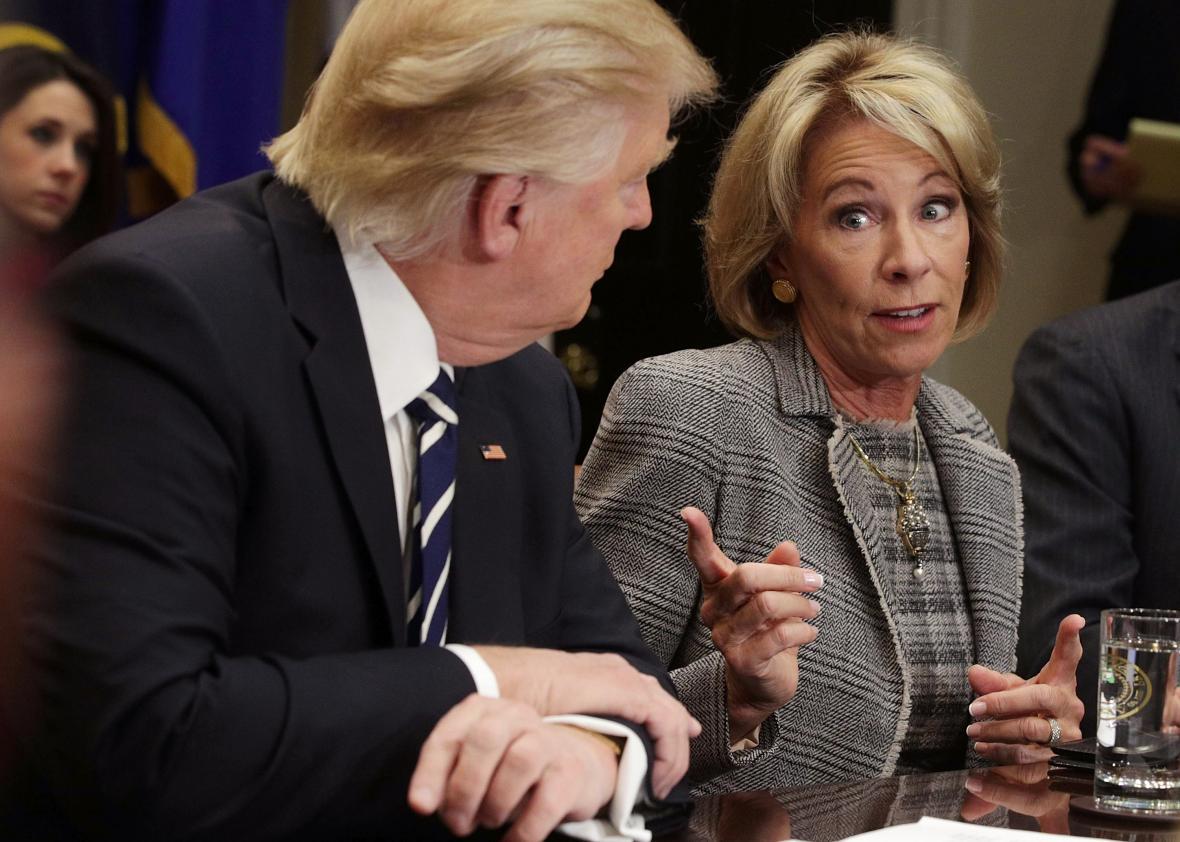As was widely expected, President Trump’s new budget calls for eliminating a major student loan forgiveness program designed to help government and nonprofit workers, such as lawyers, teachers, and social workers. Those who have already taken on debt for school may not need to worry for now, however, because it appears the administration only wants to end the program for new borrowers.
The White House is proposing an overhaul of the student lending system that would streamline many of the options the government currently offers borrowers for paying down their debts. As part of those reforms, it would end the Department of Education’s Public Service Loan Forgiveness program, or PSLF, which wipes borrowers’ balances after they spend 10 years working either for a government or nonprofit employer. A good number of readers panicked when I wrote about this possibility last week—yes, I saw all your emails and tweets—since it wasn’t clear if people currently paying their loans would be grandfathered into the program. Many, many young adults have gone deep into debt for grad school in order to pursue relatively low-paying careers in the public or nonprofit sectors on the assumption that PSLF would be around to sweep away their loans after a decade (full disclosure: my wife is one of them), and no small number have been worried that Washington might pull the rug out from under them.
Trump’s proposed budget says changes to the student loan program, including PSLF, would only apply to those who start borrowing after July 2018. (I’ve contacted the Department of Education to confirm my reading of the budget and am waiting on an answer, but the text seems pretty straightforward.)
To be clear, I am leading with the good news here because I know there are droves of people who’ve been freaked out that the Trump administration might scrap the program they staked their financial futures on. However, this budget is still pretty brutal on students. Aside from nixing PSLF for future generations, it ends subsidized loans for low-income students and milks an additional $76 billion from the student loan program over a decade, in part by making students pay more of the earnings each year under a revised income-based repayment plan. The changes might work OK for those who only have undergraduate loans, since they will now qualify for forgiveness after 15 years under income-based repayment, rather than the current 20. But those with graduate debt will have to spend 30 years paying back their loans before getting them forgiven, instead of 25. Given that graduate degrees are only becoming more essential in the workplace, even in lower-paid careers like teaching, it seems like a pretty raw deal for the next generation of kids on campus.
How much of this could Trump actually accomplish? The White House would need Congress’ help to end PSLF or subsidized loans. But it seems possible the administration might try to restructure income-based repayment on its own, given that President Obama took unilateral action to expand the program. Beyond that, there are plenty of conservatives on Capitol Hill who would be happy to increase costs on students in the name of budget savings, and given that higher education tends be a second-tier issue in Washington, a lot of these initiatives could be slipped quietly into larger bills. Without an outcry, I wouldn’t be surprised to see some of these plans become a reality.
